Only about 340 right whales remain worldwide. Many visit Cape Cod Bay. Meet eight of them.
Editor's note: This story was paired with a North Atlantic right whale bracket, in which readers chose the whales, over three rounds, whose stories and experiences struck them most. Find out who won here.
For several weeks, North Atlantic right whales arriving in Cape Cod Bay have been drawing small crowds to the shore to see the rare animals feeding and hanging out. The visits led the Center for Coastal Studies' Marine Education Director Jesse Mechling recently to comment it's some of the best whale activity he's seen from shore in a long time.
Since December, researchers at the Provincetown institution have identified at least 186 individual right whales in the bay, including nine of this year's 11 known mother-calf pairs: more than half the world's population of the critically endangered whale.
Only about 340 individuals — plus or minus seven — remain, according to a report released in the fall by the North Atlantic Right Whale Consortium. The most significant threats to the whales' lives are entanglements and boat strikes. At least 80% of the animals have been involved in an entanglement, boat strike or both.
To the researchers who keep tabs on them, the whales are more than just numbers and statistics. They are individuals and families, grandparents, parents and offspring, each with its own quirks, their own stories of gain and loss, health and injury — existing at the edge of survival and extinction.
We've asked scientists at the New England Aquarium and the Center for Coastal Studies about some of their favorites, discussed below. Over three rounds of voting, we invited our readers to choose, from among these, who they find the most endearing.
Mother vs daughter Who is the winner in our North Atlantic right whale bracket?
War
North Atlantic Right Whale Catalog #: 1812
Gender: Female
Birth year: Unknown (first seen in 1988)
Age: At least 35
2022-2023 mother
Number of known previous calves: 6 — Catalog #3680 Seadragon, Catalog #3812 Nimbus, Catalog #4212, Catalog #4612, and two uncatalogued calves (one died at just two months of age).
Direct human impacts: 3 documented entanglements
Human impacts on family members: 9 entanglements, one vessel strike
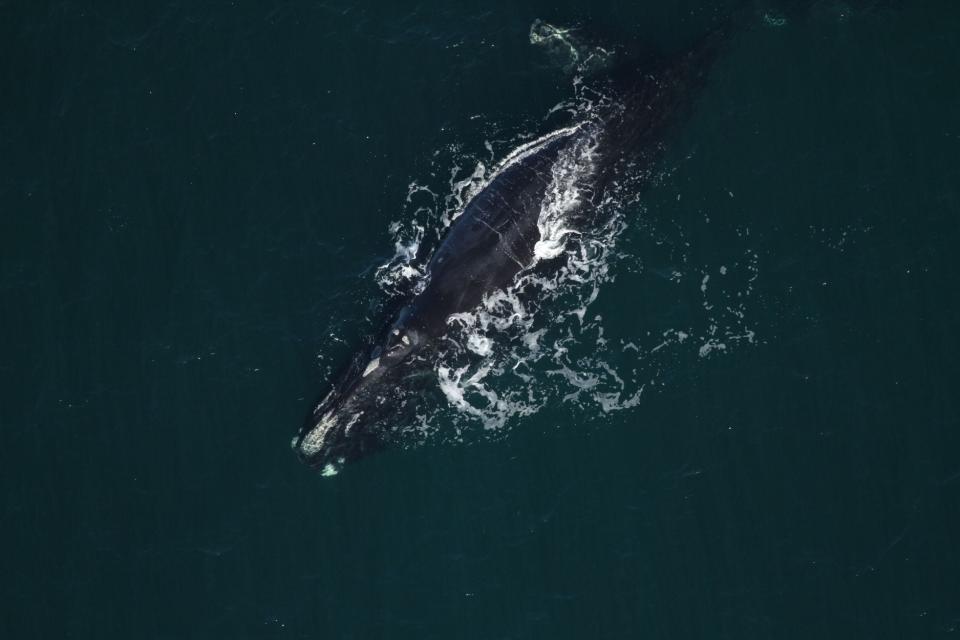
War is a favorite of Kelsey Howe, an associate research scientist at the New England Aquarium. Howe has seen War a handful of times up and down the East Coast.
"She was a mom my first season," Howe said.
Before a name was chosen, she said there was a "winky, funny" joke among the team about how the whale should be named "war" because her catalog number is 1812. In 2018, when she came up to be named by the North Atlantic Right Whale Consortium, that's what was suggested, and picked — it helped that the whale's callosity (bumps on the head that appear white) "gives the appearance of cannons."
Despite losing two calves to early deaths, and dealing with three entanglements, Howe said War has been a prolific reproducer. She's had three calves in the last decade, bucking an overall trend. A lower birth rate and longer intervals between births have had scientists worried about the species' ability to escape the spiral toward extinction.
War, said Howe, "is a strong lady, a good mom."
Lobster
North Atlantic Right Whale Catalog #: 3232
Gender: Female
Birth year: 2002
Age: 21
Number of known calves: 2
Direct human impacts: 3 documented entanglements (all minor, no gear observed)
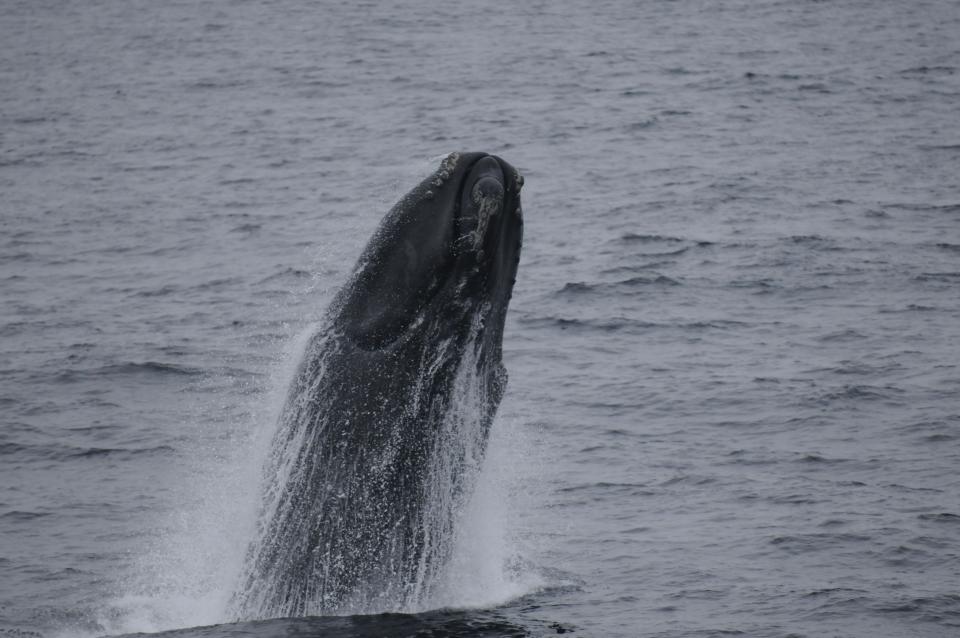
Lobster is a favorite of Kate McPherson, a research technician at the New England Aquarium. As an intern with the Center for Coastal Studies, she first encountered Lobster.
"I first saw her in 2019 in Cape Cod Bay," she said. Lobster was part of the first "surface active group" she had ever seen, describing the behavior as "whales rolling and touching at the surface."
During that encounter, McPherson said, "at one point she lifted her head straight out of the water and I was able to get photos of her mandibles, which was uncommon for me that season. The effect was very impressive."
Lobster also stands out for showing up near Brier Island off Nova Scotia in 2021 with a surprise calf.
"While right whale mother/calf pairs are usually first detected off the coast of the southeastern U.S., where most calves are born, Lobster joins a dozen or so mothers who were first detected with a calf north of the known calving area," McPherson said.
Wart
North Atlantic Right Whale Catalog #: 1140
Gender: Female
Birth year: Unknown (first documented sighting in 1981)
Age: Unknown (Based on first and last sighting, and the fact she was seen with a calf in 1982, she probably reached at least 43, assuming that calf was her first and she gave birth around the expected age of 10)
Number of known calves: 7, plus 14 grand-calves, and nine known great-grand-calves.
Direct human impacts: 2 known entanglements
Human impacts on family members: 70 entanglements, ship strike deaths
Presumed deceased
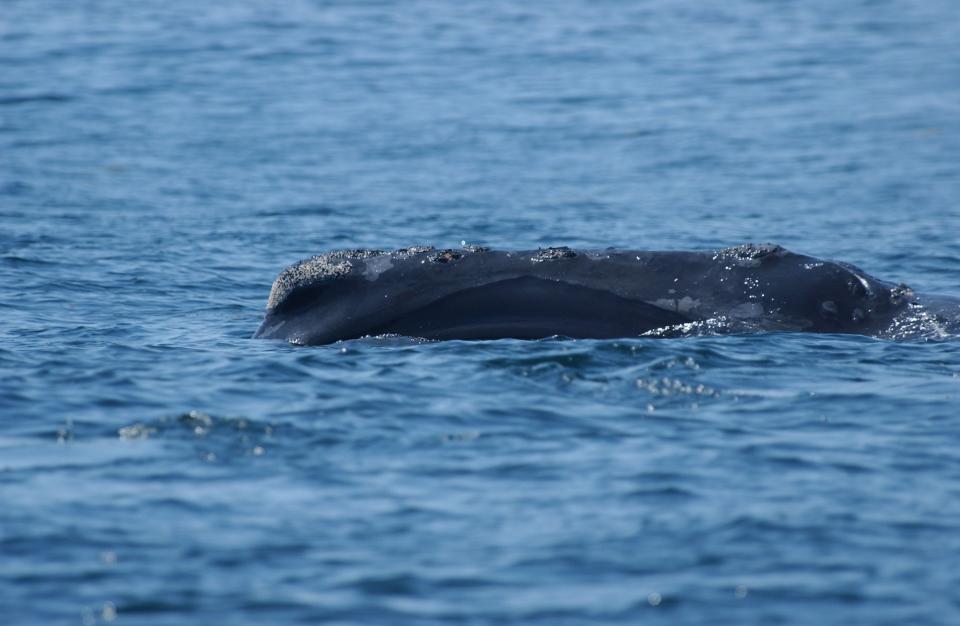
Philip Hamilton, a senior scientist with the New England Aquarium, said even though Wart has not been seen in nine years, and is presumed deceased, she holds a special place because of the number of whales descended from her. She's got a special place in his heart for other reasons, too.
"I photographed her 36 years ago in Cape Cod Bay in my first season on the water in 1987 at the Center for Coastal Studies," he said.
Hamilton was also on the boat in August of 1990 when Wart was satellite tagged in the Bay of Fundy. Afterward, he said, he "was amazed to learn that she and her calf traveled down to New Jersey and back over a 6-week period."
Additionally, he was one of the people involved in 1994 when Wart's 11-month-old son, later named Shackleton, swam more than 100 miles up the Delaware River and almost beached by an oil refinery.
"Her large family — at least 29 progeny — has an extraordinary wealth of stories that capture the entire right whale experience: over 70 entanglements, ship strike deaths, unusual journeys (including to Iceland and France)," he said, adding, "the amount of information that we've learned from her and her family is kind of mind-boggling. She feels like this sort of grande dame that can teach those of us who care really anything we need to know about right whales."
Sundog
North Atlantic Right Whale Catalog #: 3823
Gender: Female
Birth year: 2008 (daughter of Sonnet)
Age: 15
Number of known calves: No known calves
Direct human impacts: 6 documented entanglements (leaving her with significant scars on head and tail
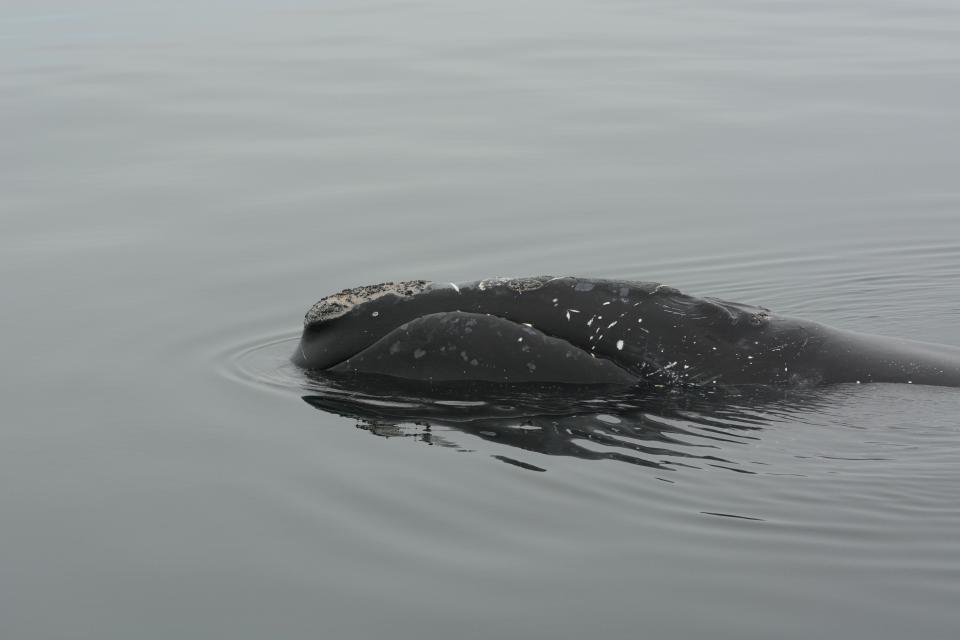
Sundog is a favorite of Amy Warren, an assistant research scientist at the New England Aquarium. She'll never forget her first encounter with Sundog on Cape Cod Bay while documenting some of the local whales in collaboration with the Northeast Fisheries Science Center.
"This whale was with a few other whales and they were interacting when all of a sudden she just turned and came directly toward our boat," Warren said.
The scientists decided the safest thing to do was to keep the boat still, with engines off, and allow the whale to pass safely underneath. But Sundog had other ideas: she wanted to inspect them.
Sundog spent about 20 minutes slowly swimming around the boat, "occasionally rolling slightly to make eye contact," Warren recounted. "Our boat full of scientists, who have seen hundreds of right whales, were completely in awe the entire time."
Sundog was last seen entangled in fishing gear in May 2022, and has not been seen since.
Musketeer
North Atlantic Right Whale Catalog #: 4360
Gender: Unknown
Birth year: Unknown (first sighted in 2013)
Age: At least 10
Number of known calves: 0
Direct human impacts: 1 known minor entanglement; also has a head wound of unknown origin
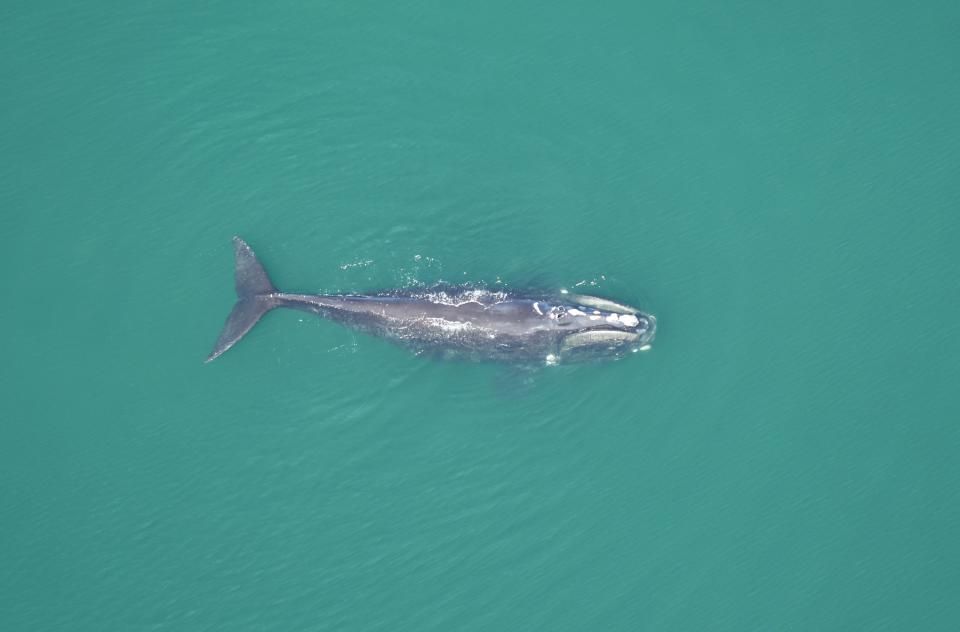
Musketeer is a favorite of Katherine McKenna, an assistant research scientist at the New England Aquarium.
This whale doesn't often make it to Cape Cod Bay, but is loyal to other Massachusetts waters, especially south of Nantucket and Martha's Vineyard, George's Bank, and the Great South Channel.
"There are over 30 sightings of Musketeer and all but one sighting have been in Massachusetts waters," McKenna said.
She said it's unique that a right whale doesn't frequent Cape Cod Bay or Massachusetts Bay very often, making Musketeer a bit more of a "one for one" than a "one for all" or "all for one" type.
McKenna likes the mysteriousness of this individual, who is possibly a calf documented in 2012, but scientists are unable to confirm that without a genetics sample.
The name Musketeer comes from the three fused "islands" in the middle of the callosity and a scar on its head that "looks like a feather from a musketeer hat."
Manta
North Atlantic Right Whale Catalog #: 1507
Gender: Male
Birth year: 1985
Age: 38
Direct human impacts: Has scars that may indicate boat strike and/or entanglement
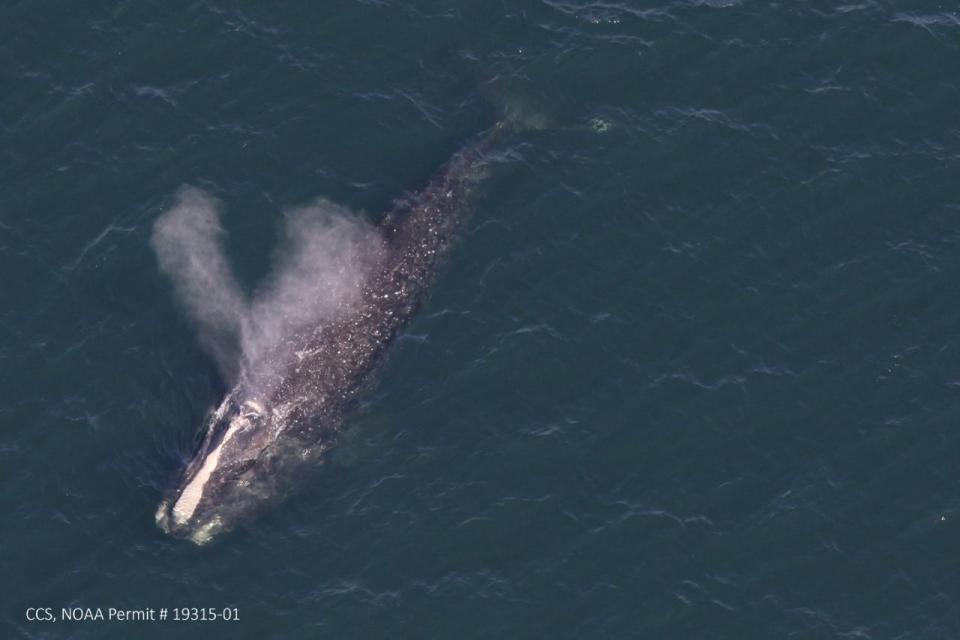
Manta is one of the favorite whales among team members at the Center for Coastal Studies, first sighted in Cape Cod Bay in 1986.
"Manta has been the most regularly sighted whales in Cape Cod Bay since Center for Coastal Studies surveys began in 1998," according to the team.
He was first observed as a calf off of Jeffrey’s Ledge in July 1985, with his mother, Shenandoah (#1266). His father was Delta (#1333).
For 30 years, Manta was sighted regularly in both Cape Cod Bay and the Bay of Fundy. He hasn’t been observed in the Bay of Fundy since 2019, and, instead, is seen in Cape Cod Bay and the Gulf of St. Lawrence. He’s been seen in Cape Cod Bay every year since 2004, and he’s only been observed south of Massachusetts once, when he was seen off Georgia in February 2008
Pilgrim
North Atlantic Right Whale Catalog #: 4340
Gender: Female
Birth year: 2013
Age: 10
2022-2023 mother
Number of known calves: 1
Direct human impacts: Has scars that may indicate boat strike and/or entanglement
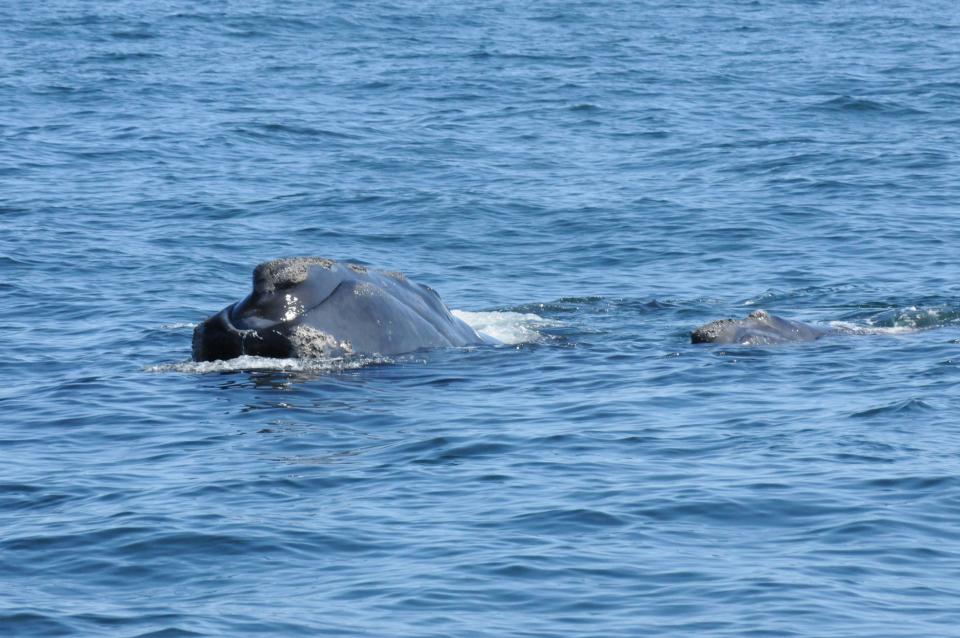
Pilgrim has a special place in many people's hearts, including the team at the Center for Coastal Studies. She is not only the daughter of one of the right whale community's grande dames, but she is also a first-time mother this spring.
"Pilgrim’s story began with an interesting twist: she was initially seen in Cape Cod Bay, rather than the southern calving grounds," Provincetown researchers said.
Her mother, Wart, was disentangled by the Center for Coastal Studies Marine Animal Entanglement Response team in May 2010 and was not seen again until January 2013, when she was sighted just off Plymouth with Pilgrim in tow.
"Initially, there was some concern in the research community that a calf born in the cold northeast winter would struggle to survive," the team said.
But Pilgrim proved their fears unfounded.
"Fast forward 10 years, Pilgrim was the first known mom of 2022 – 2023 and we’ve sighted the healthy-looking pair five times from the air so far this season," the team said.
Ruffian
North Atlantic Right Whale Catalog #: 3530
Gender: Male
Birth year: 2004
Age: 19
Direct human impacts: Entanglements, and he has scars that may indicate boat strike/s
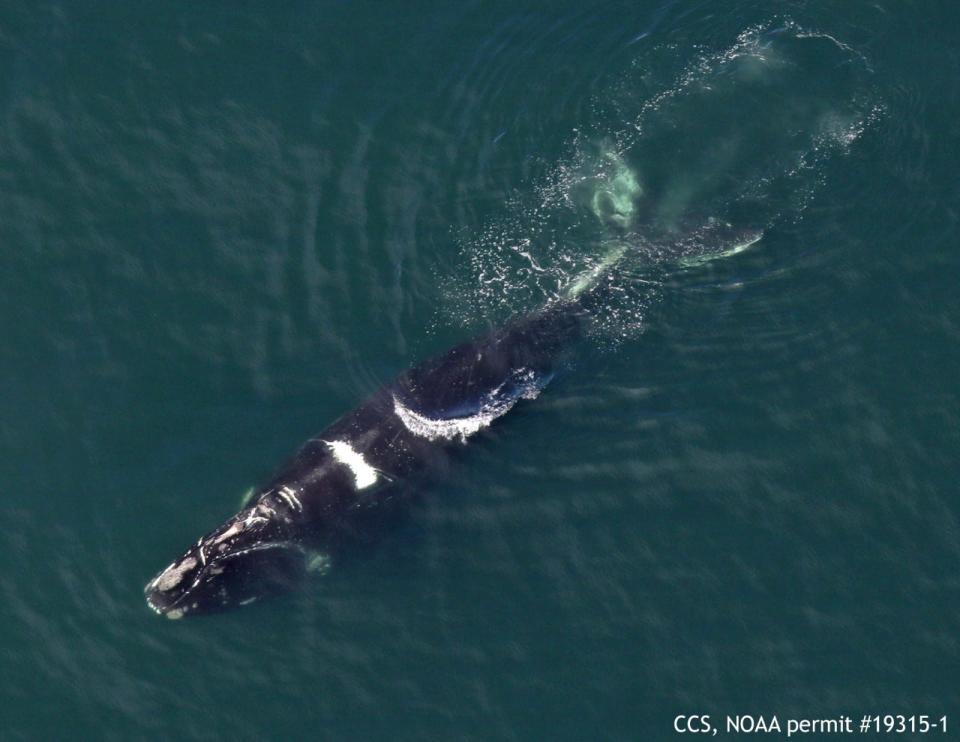
Ruffian is another favorite among the scientists at the Center for Coastal Studies. His mother is Rat (#1509), and his father is known only by his catalog number, #1708. Touseled and roughed up, Ruffian has proven himself to be one tough and resilient individual.
"In his 19 years, Ruffian has suffered and survived several entanglements that have left him severely scarred, giving him marks that make him easily identifiable in the field," said the team.
He’s a regular visitor to Cape Cod Bay. The Center for Coastal Studies team has seen him almost every year since 2007.
Heather McCarron writes about climate change, environment, energy, science and the natural world. Reach her at hmccarron@capecodonline.com, or follow her on Twitter @HMcCarron_CCT.
Get the Cape Cod news that matters delivered to your inbox. Sign up for our free newsletters.
This article originally appeared on Cape Cod Times: Meet eight of the North Atlantic right whales who visit Cape Cod Bay

